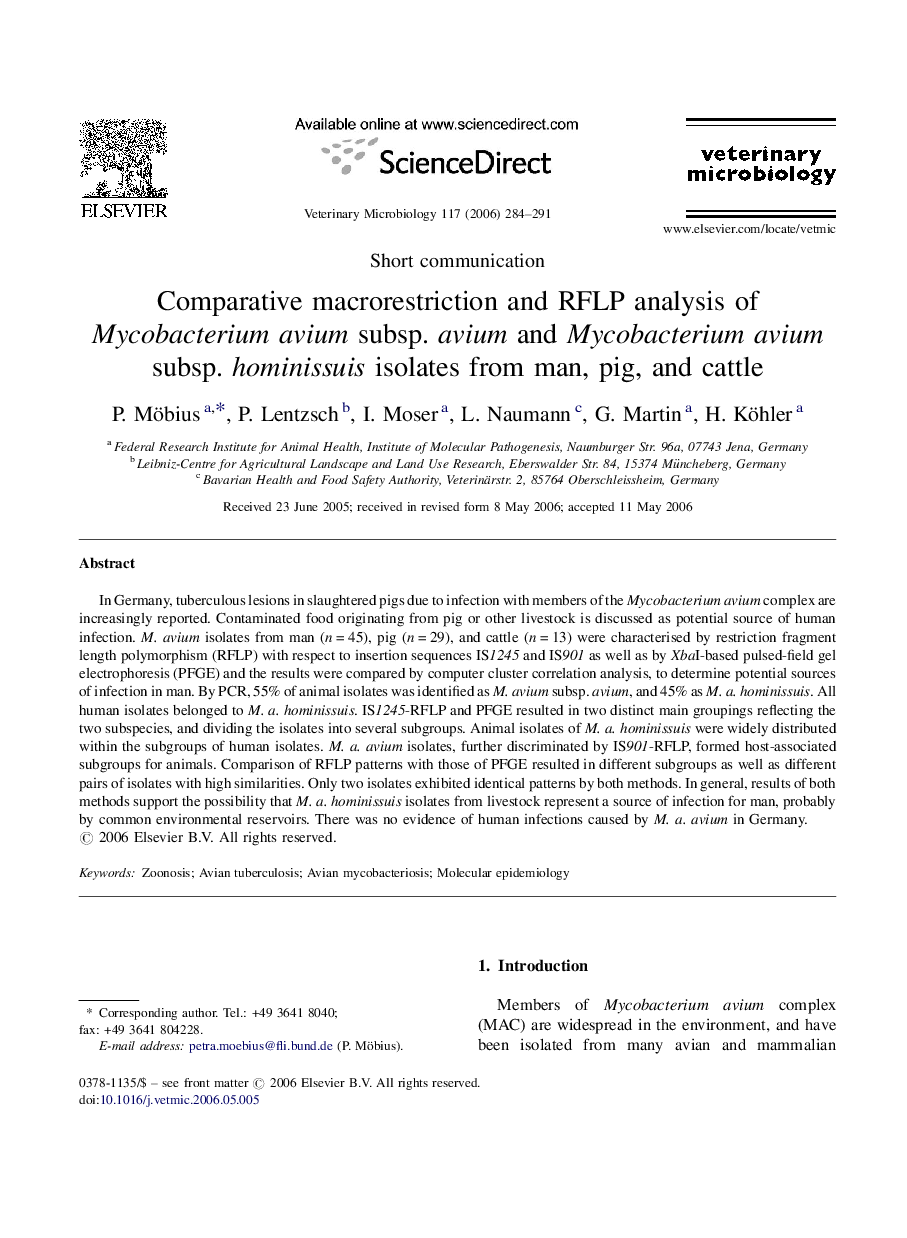| کد مقاله | کد نشریه | سال انتشار | مقاله انگلیسی | نسخه تمام متن |
|---|---|---|---|---|
| 2469652 | 1555460 | 2006 | 8 صفحه PDF | دانلود رایگان |

In Germany, tuberculous lesions in slaughtered pigs due to infection with members of the Mycobacterium avium complex are increasingly reported. Contaminated food originating from pig or other livestock is discussed as potential source of human infection. M. avium isolates from man (n = 45), pig (n = 29), and cattle (n = 13) were characterised by restriction fragment length polymorphism (RFLP) with respect to insertion sequences IS1245 and IS901 as well as by XbaI-based pulsed-field gel electrophoresis (PFGE) and the results were compared by computer cluster correlation analysis, to determine potential sources of infection in man. By PCR, 55% of animal isolates was identified as M. avium subsp. avium, and 45% as M. a. hominissuis. All human isolates belonged to M. a. hominissuis. IS1245-RFLP and PFGE resulted in two distinct main groupings reflecting the two subspecies, and dividing the isolates into several subgroups. Animal isolates of M. a. hominissuis were widely distributed within the subgroups of human isolates. M. a. avium isolates, further discriminated by IS901-RFLP, formed host-associated subgroups for animals. Comparison of RFLP patterns with those of PFGE resulted in different subgroups as well as different pairs of isolates with high similarities. Only two isolates exhibited identical patterns by both methods. In general, results of both methods support the possibility that M. a. hominissuis isolates from livestock represent a source of infection for man, probably by common environmental reservoirs. There was no evidence of human infections caused by M. a. avium in Germany.
Journal: Veterinary Microbiology - Volume 117, Issues 2–4, 31 October 2006, Pages 284–291